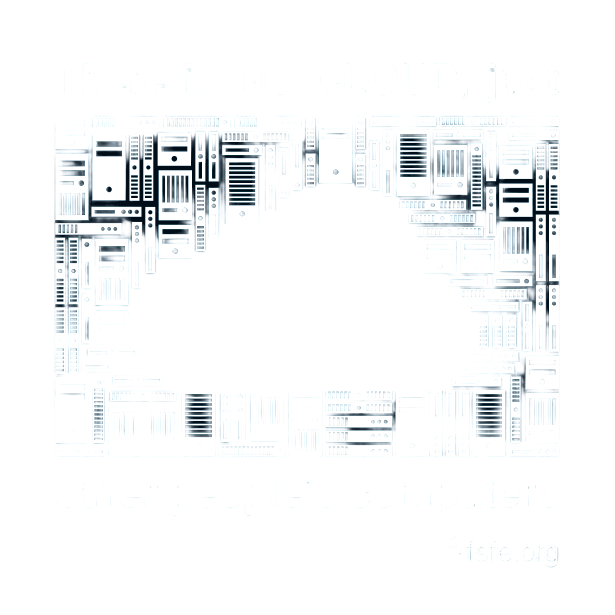Publication date: September 09, 2024
One of the main principles of the Logos project is its strong alignment with the Web3 ethos. For a solution to truly be Web3, it should reflect the core principles of this space; otherwise, it might not fully capture the essence of Web3. Web3 is the next step in the evolution of the internet, which means that new, innovative solutions are required, without settling for unnecessary compromises. A major topic of discussion and a key focus for Logos, is the decentralization of Web3's physical infrastructure. It's widely known that a significant portion of the Web3 infrastructure is hosted by cloud providers - whether through platforms like OnFinality, Infura, or Chainstack, or by directly hosting on cloud providers, which usually requires more technical know-how.
The first issue that arises is that hosting Web3 infrastructure in data centers leads to centralization. Some may argue that, since these data centers are distributed across the globe, a certain level of decentralization is still maintained. While that's true to a degree, history has shown that centralization often occurs when a significant portion of nodes is hosted in a single data center, which happens frequently. Another common argument is that, when developing solutions, a balance must be struck and compromises made to deliver the product, accepting that not all aspects of the Web3 ethos can always be fully realized. A good example of this is the concept of the Blockchain Trilemma.
The Blockchain Trilemma states that it's challenging to achieve decentralization, security and scalability simultaneously at a high level. Typically, when you maximize two of these factors, the third tends to suffer. This are the common trade-offs in the blockchain network design:
-
Decentralization + Security: If a network is decentralized and secure, scalability often suffers because many nodes must verify every transaction, leading to slower transaction speeds.
-
Security + Scalability: A network that is highly scalable and secure might sacrifice decentralization by relying on centralized validators or servers. This creates a dependency on a few actors, which goes against the principle of decentralization.
-
Decentralization + Scalability: A decentralized network that is efficient and fast may face security challenges because it becomes harder to maintain consensus or integrate the necessary mechanisms to ensure safety.
This trilemma presents significant challenges for blockchain projects, as they usually only manage to achieve a strong balance in two of the three areas, while compromising on the third.
In Web3, however, compromising on decentralization is not an option because that is what Web3 stands for - it's not "partially decentralized," it's decentralized. The same applies to security - if the network isn't secure, its value is undermined. If the system is not efficient, it will struggle to achieve widespread adoption. Therefore, a solution that truly aligns with the Web3 ethos must address all three factors - decentralization, security and scalability - at a high level.
If Web3 is to be the new internet, it must treat all three factors equally. Web3 has made compromises in the past to advance the space, but it's time to enter a new era where fewer compromises are made. Web3 doesn't need to keep solving the same problems over and over - it must continue to evolve.
Another important issue is energy consumption and environmental impact. Data centers require massive amounts of electricity to power servers, networks and cooling systems. It is estimated that global data centers consume around 1% to 2% of the world's electricity, and this percentage is expected to rise, especially with the growing demand for cloud computing and artificial intelligence.
The solution for one of the problems (cooling) is to use devices that aren't always running. When one device shuts down, the data automatically shifts to another that's still operational, which is one of the core ideas behind the Logos project. This reduces the reliance on energy-consuming cooling systems, which account for about 40% of a data center's electricity usage. Operating data centers contributes significantly to CO₂ emissions, especially when the power comes from fossil fuels like coal, oil, or gas. Even in regions with a higher share of renewable energy, the energy demand can still be so high that it puts considerable pressure on these resources.
Centralized data centers also depend heavily on constant hardware upgrades, consuming large amounts of rare materials, which are becoming increasingly scarce. By utilizing existing hardware, the demand for new materials can be reduced.
When creating the next generation of the internet, it's crucial to tackle these issues, as they are fundamental not only for the future of Web3 but for the advancement of technology as a whole.
Now, let's address the topic of costs and transparency. We've often heard that cloud computing is cheaper, which is why many companies have initiated migrations. However, this hasn't worked out well for smaller businesses. There are several reports highlighting the issue of cloud costs, showing that more people are realizing it's not necessarily cheaper. Examples include The Big Cloud Exit FAQ (opens in a new tab), The Great Cloud Exit (opens in a new tab), Basecamp decided to leave the cloud (opens in a new tab), Cloud vs On-prem (opens in a new tab). These reports underline that cloud services are not always as cost-effective as initially thought, largely because the cloud lacks transparency when it comes to pricing.
Cloud costs have been increasing steadily over time. According to data from the Producer Price Index (PPI) (opens in a new tab) for hosting, ASP and other IT infrastructure services (opens in a new tab), there is a clear upward trend in prices. The Producer Price Index measures the average change over time in the selling prices received by domestic producers for their goods and services. It reflects price changes from the seller's perspective and is used to assess inflation at the wholesale level.

In Web3, computing costs play a crucial role because the operations carried out on the network are essentially paid for in terms of computational resources. With rising cloud computing costs, this will eventually impact the prices within the network itself, as it becomes increasingly expensive to run a Web3 node on cloud infrastructure.
As we can see from the information above, this kind of infrastructure isn't ideal for Web3, where transparency and trustlessness are core principles. When using cloud services, you are required to place a lot of trust in the provider. Web3 stands for trustlessness, transparency, decentralization and independence that are difficult to achieve as long as you remain dependent on cloud services.
Since statistics are a powerful way to confirm assumptions, we conducted a small research study that revealed data even more concerning than expected. We looked at five major networks and gathered data on how much of their blockchain infrastructure is hosted by large cloud providers.

On average, over 50% of the infrastructure in these networks is hosted by cloud providers. Of course, we don't have data for every network, but we strongly believe that if this is the case for five major networks, it is highly likely that other networks face a similar situation. This shows that a big part of Web3 infrastructure is being run on centralized Web2 cloud services. This is not how the next stage of the internet should look. In Web2 is everything centralized, and by relying on such services, it's impossible to claim that this is truly the next evolution of the internet. The DePin approach and the introduction of web3 serverless solutions are steps in the right direction, but Web3 infrastructure itself, particularly Web3 node hosting, remains heavily dependent on cloud services.
We have addressed the issues of centralization, energy consumption, environmental impact, costs and transparency - just a few of many factors - to illustrate that by relying on global data centers in Web3, we have very little control, creating a significant dependency that directly contradicts the principles of Web3. These issues continue to spark debate, and while the compromises made so far have helped Web3 progress, it's clear the space needs to move forward. Now is the time to address these unresolved challenges without compromise, to drive Web3 into its next phase of development.
I'd like to end this article with an image of a sticker I saw at the Web3 Summit in Berlin this year, brought by Richard Stallman from the Free Software Foundation. The moment I saw it, I immediately connected it to the Logos project. The sticker initially serves as a stark, eye-opening reminder that when you use the cloud, you're still just using someone else's computer. In reality, these computers belong to profit-driven, non-transparent companies whose sole aim is to maximize profits and don't care about your data.
However, from our perspective, we envision a Web3 world where the Web2 concept of centralized cloud services no longer exists. Instead, the Web3 infrastructure would be built on a decentralized network of devices, owned and operated by the community. With the blockchain technology, transparency and privacy would be guaranteed, and only those who rightfully own the data would have access to it.
We see a future where there is no cloud, but rather a community-driven network that fully embodies the Web3 ethos.

Do you have questions or want to discuss more? Join our discussion on Discord (opens in a new tab)
References:
- Avalanche Network Metrics (opens in a new tab)
- Cardano Pooltool (opens in a new tab)
- Ethereum Mainnet Statistics (opens in a new tab)
- HiveNet Blog (opens in a new tab)
- No Cloud Sticker (opens in a new tab)
- ProbeLab (opens in a new tab)
- Producer Price Index for the Data Processing and Related Services Industry (opens in a new tab)
- Solana Validator Metrics (opens in a new tab)